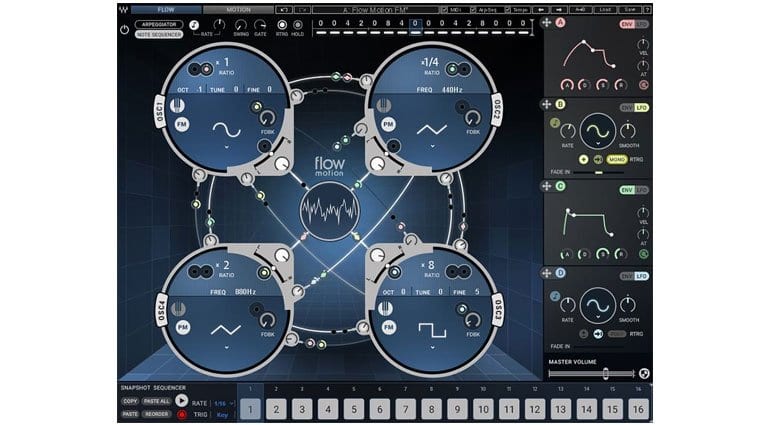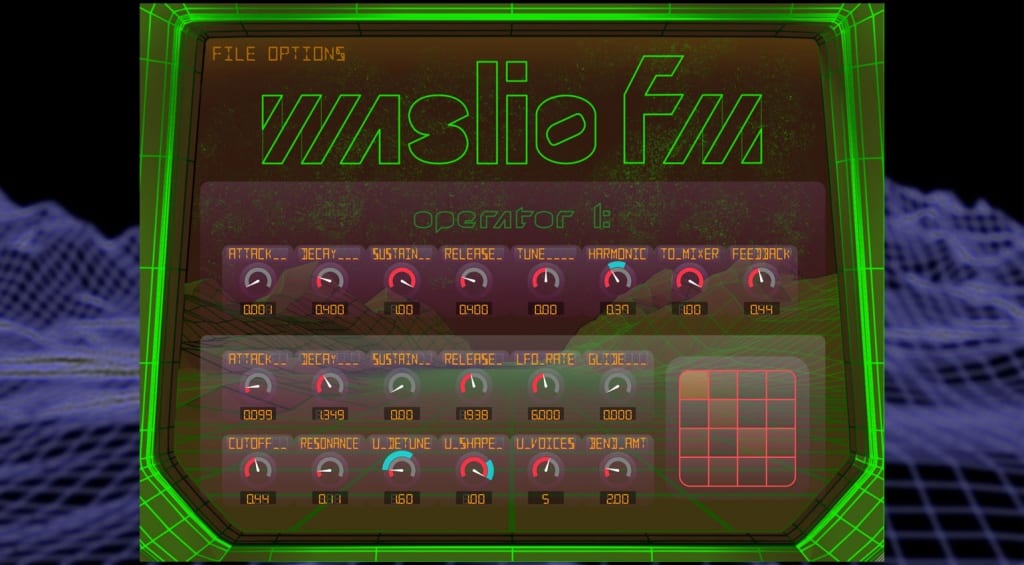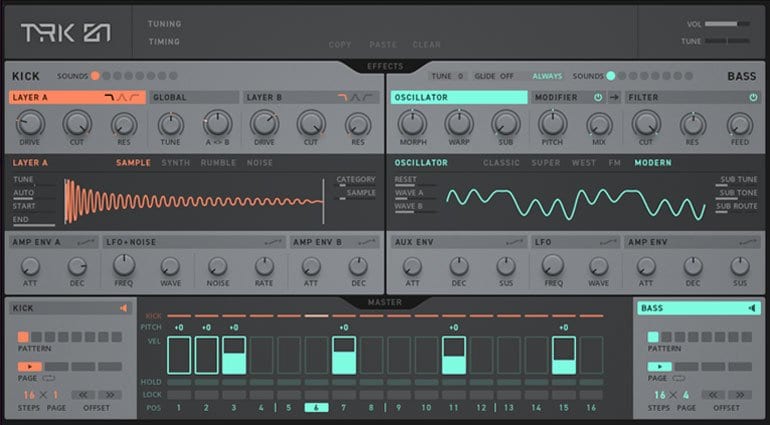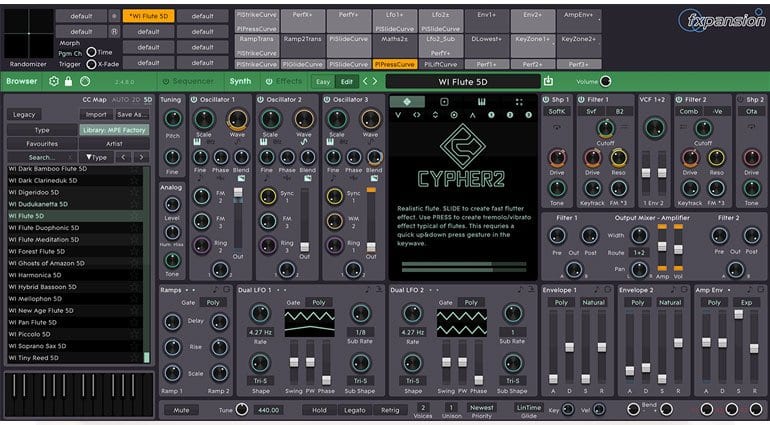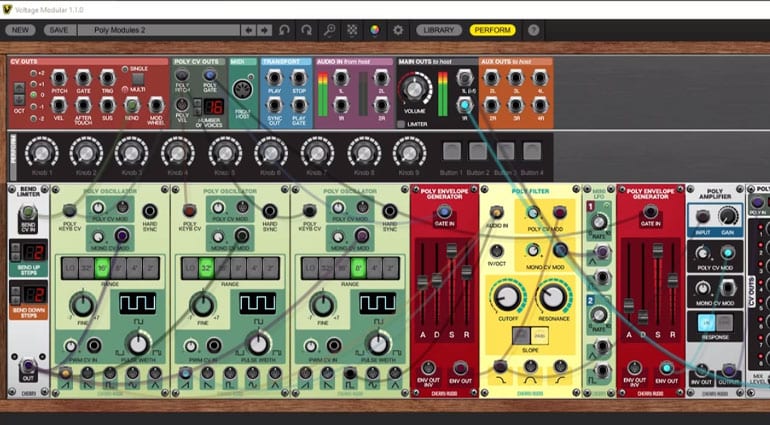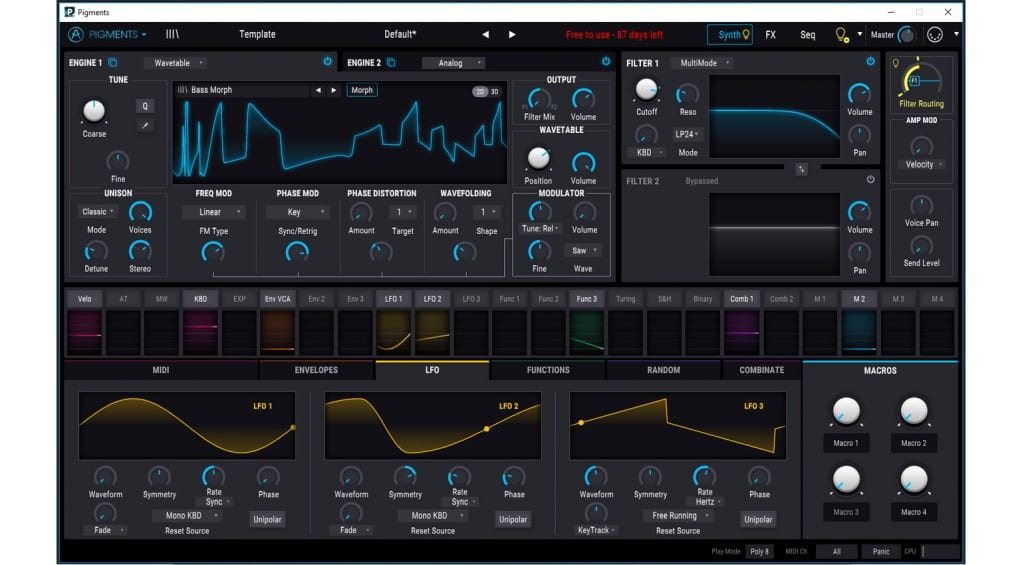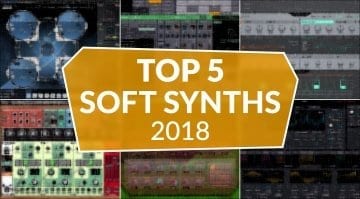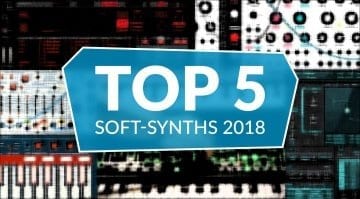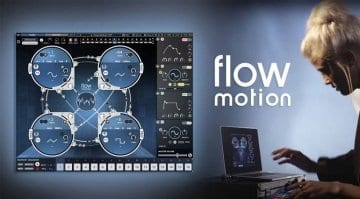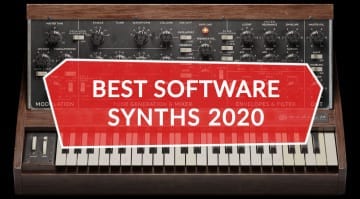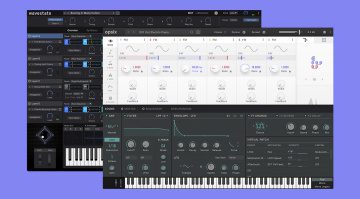Top 5 Software Synthesizers of 2018 (reprise)
In recent times a lot of focus has shifted to hardware synthesizers but that doesn’t appear to be at the expense of awesome software synthesizers. They just keep on coming, keep on evolving and are finding more reasons as to why computer-based music making has some distinct advantages over hardware. I did a Top 5 soft-synth round-up in the summer but since then there have been enough releases to warrant some significant changes. So My new Top 5 choices from 2018 highlight the exciting possibilities available for your desktop.
WaslioFM and Flow Motion
This is cheating a little bit but I think it’s a dead heat between WaslioFM and Flow Motion for the best FM soft-synth of 2018. Most FM based releases are determined to offer an easy way to get into FM synthesis – apparently, it’s all a bit hard and so we need help in crafting FM into interesting sounds. Both WaslioFM and Flow Motion did this with aplomb.
Waves Flow Motion is an exciting visual feast of colliding oscillators and modulators. It combines it with subtractive synthesis elements in order to make us feel more at home. The sequencer lets you re-craft everything to generate completely different sounds for each step. You don’t have to know anything about FM to discover sounds and movement in Flow Motion.
WaslioFM takes a different tack by combining parameters and bringing out only the most interesting ones. But once you get beyond the cool 80’s vibe interface it’s in the sounds that WaslioFM really shines. I had a conversation with the developer John Caplan who pointed out how much better his unison engine was over Waves. And he’s probably right, WaslioFM sounds amazing.
Native Instruments TRK-01
Every now and then something comes along that is simply too much fun. TRK-01 is one of those. You can lose yourself for hours making beats and exploring modulated bass sounds and then find yourself performing kickin’ tunes like you’re a diva DJ at Tomorrow Land (ahem). There’s obviously a lot more to it than that but TRK-01 just pulls a smile across your face whenever you use it and that’s got to be a good thing.
TRK-01 gives you two things – a kick drum and a bass synth – that’s it! But you’ll find that you can pull out entire tracks of interwoven modulated noise and percussive happenings within this 2 track environment. The Kick blends two layers together from 4 sound sources – sample, synth, noise or “rumble”. You have all sorts of controls over the makeup of the sound, the tuning and the envelope. When you plug it into the step sequencer you can edit each sound for each step so you can swap in snare or other percussive sounds to generate a range of stuff in the one track. The flip side is cool bass synth that can be wavetable, FM, supersaw, subtractive or wavefolded. Loads of great sounds, a ton of great modulation and the sort of filter that makes you want to play.
Native Instruments thoroughly nailed the idea of a simple groove machine that’s capable of generating massive beats while being deep and dead easy to use. They’ve also just released a free version called TRK-01 Play which you should get immediately.
CYPHER 2
Complex, expressive and very interesting is the reworked CYPHER 2 from Fxpansion. Since their merging with ROLI, Fxpansion has sought to fully embrace the MPE dimensional controller technology. CYPHER 2 takes this on vigorously and gives you the tools to generate extraordinarily expressive and fluid sounds. This is a deep dive into virtual analogue modelling. There are 3 oscillators, FM, twin filters with 6 models and 30 effects. All of it wired together and primed for MPE control. There’s a lot of morphing between waveforms, a huge range of modulation options and complex oscillations. The “TransMod” system opens up every parameter to 5 dimensions of control monophonically or polyphonically. And the step sequencer works in 5 dimensions and runs alongside 3 modulation sequencers.
It’s possible to take sounds from the simple to the extremely complex with just a few squeezes of your ROLI Seaboard controller. This is designed to offer power rather than simplicity and it does look a bit daunting. All the signal and modulation flow is nicely animated which helps you navigate this monster of a synth. For ROLI users this is a no-brainer and for the rest of us it’s an extraordinary place to play.
Voltage Modular
After an impressive but slightly restrained start Voltage Modular has begun to show its power and versatility. It’s a virtual Eurorack environment. It’s funkier and freer than Softube Modular and simpler and more compatible than VCV Rack and so has every opportunity to make a name for itself as a virtual modular synth. You have all the usual modules plus loads of utility style ones that most of us don’t quite know what to do with – but we will in time. The drag-and-drop ease of use is excellent, the range of modules is comprehensive and it works both standalone and as a VST plugin. There are modules that will convert its internal CV signals to MIDI so that you can run out to external hardware. It can completely drop into a hardware modular system with its multiple input and output routings, MIDI and CV connections and plugin compatibility.
The most recent update has brought polyphony in the shape of dedicated polyphonic modules and polyphonic patch cables to ease the patching. It continues to evolve and more third parties are developing for the format. You can even build your own modules with the free development tools.
Arturia Pigments
Arturia sprung this one on us right at the end of the year. Pigments is a two-layer synthesizer combining wavetable and virtual analog synthesis in a wonderfully animated hybrid soft-synth. The wavetable layer comes with its own FM, phase modulation, phase distortion and wavefolding. The analog layer comprises 3 oscillators with variable waveshapes, noise, sync and cross modulation. The dual filter section features filter models from all sorts of synths. The bottom half of the screen deals in modulation. From expressive keyboard controls through LFOs, functions, envelopes, to randomisation and combinations. Each option gets its own oscilloscope showing the way the modulator is moving. Throughout the interface everything that’s being moved or generating movement is alive and animated which really invites you in to tweak and play.
The sequencer and arpeggiator inject a whole world of movement and possibility. There’s a randomisation engine which can govern every aspect of the sequencer and create a continually evolving flow of melody and rhythm.
Pigments is really well put together and feels like an exciting place to play with huge sonic potential.
What’s your favourite?
So how does my list stand up to yours? What’s been the best software synth that you’ve come across this year?

